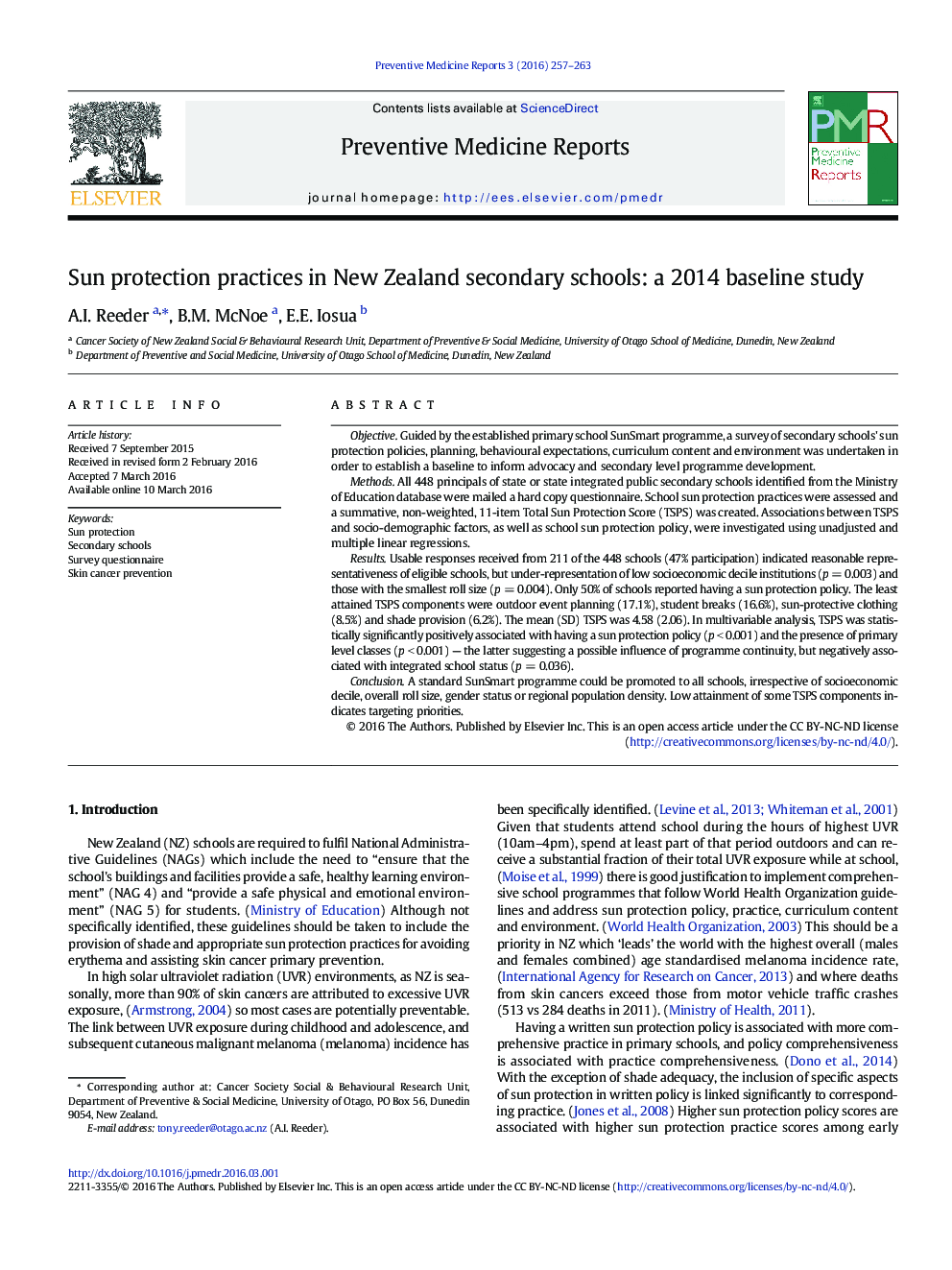| کد مقاله | کد نشریه | سال انتشار | مقاله انگلیسی | نسخه تمام متن |
|---|---|---|---|---|
| 4202354 | 1609089 | 2016 | 7 صفحه PDF | دانلود رایگان |
• Sun-protection practices of 211 secondary schools were assessed.
• Event planning, breaks, clothing and shade criteria were least likely met.
• A summative, non-weighted Total Sun Protection (TSP) score was created.
• TSP score was associated with having a sun protection policy and primary classes.
• A standard SunSmart programme could be promoted irrespective of school demographics.
ObjectiveGuided by the established primary school SunSmart programme, a survey of secondary schools' sun protection policies, planning, behavioural expectations, curriculum content and environment was undertaken in order to establish a baseline to inform advocacy and secondary level programme development.MethodsAll 448 principals of state or state integrated public secondary schools identified from the Ministry of Education database were mailed a hard copy questionnaire. School sun protection practices were assessed and a summative, non-weighted, 11-item Total Sun Protection Score (TSPS) was created. Associations between TSPS and socio-demographic factors, as well as school sun protection policy, were investigated using unadjusted and multiple linear regressions.ResultsUsable responses received from 211 of the 448 schools (47% participation) indicated reasonable representativeness of eligible schools, but under-representation of low socioeconomic decile institutions (p = 0.003) and those with the smallest roll size (p = 0.004). Only 50% of schools reported having a sun protection policy. The least attained TSPS components were outdoor event planning (17.1%), student breaks (16.6%), sun-protective clothing (8.5%) and shade provision (6.2%). The mean (SD) TSPS was 4.58 (2.06). In multivariable analysis, TSPS was statistically significantly positively associated with having a sun protection policy (p < 0.001) and the presence of primary level classes (p < 0.001) — the latter suggesting a possible influence of programme continuity, but negatively associated with integrated school status (p = 0.036).ConclusionA standard SunSmart programme could be promoted to all schools, irrespective of socioeconomic decile, overall roll size, gender status or regional population density. Low attainment of some TSPS components indicates targeting priorities.
Journal: Preventive Medicine Reports - Volume 3, June 2016, Pages 257–263
